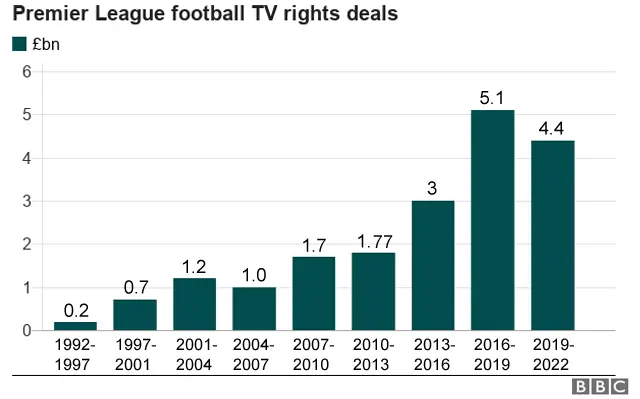Decoding the Premier League Broadcasting Deal

In the ever-evolving landscape of sports broadcasting, few entities hold as much sway and global appeal as the English Premier League (EPL). Attracting millions of viewers worldwide, the Premier League’s broadcasting rights are not just a matter of business but a pivotal aspect of its global reach and financial prowess.
The Evolution Of Premier League Broadcasting Rights
Since its inception in 1992, the Premier League has seen a dramatic transformation in how its matches are televised and streamed globally. Initially, broadcasting rights were primarily secured by traditional television networks in the UK and a few select international markets. However, with the rise of digital platforms and streaming services, the landscape has become increasingly competitive and lucrative.
The Global Appeal And Financial Stakes
The appeal of Premier League broadcasting rights lies in its massive global fan base and the intense competition among broadcasters to secure exclusive rights. These rights not only dictate where and how matches are shown but also play a crucial role in the league’s revenue streams. In recent years, the value of these rights has soared into billions of dollars, reflecting the league’s popularity and commercial appeal.
Key Players In The Broadcasting Rights Game
Several major players compete for Premier League broadcasting rights both domestically and internationally. In the UK, broadcasters like Sky Sports and BT Sport have historically dominated, with each securing substantial rights packages to broadcast live matches across their platforms. These deals are often worth hundreds of millions of pounds and are crucial for these companies to attract subscribers and maintain their market positions.
Internationally, the competition is equally fierce. Networks and streaming services across Europe, Asia, the Americas, and beyond bid aggressively for the rights to broadcast Premier League matches in their respective regions. This global interest not only generates significant revenue for the league but also expands its fan base worldwide.
The Impact On Fans And Viewership
For fans, the distribution of Premier League broadcasting rights can significantly impact how they consume matches. While traditional television remains a popular choice, the rise of streaming services has provided greater flexibility and accessibility. Many fans now enjoy live matches on their smartphones, tablets, or smart TVs, reflecting broader trends in media consumption.
Future Trends And Challenges
Looking ahead, the landscape of Premier League 해외스포츠중계 rights is likely to continue evolving. Technological advancements, shifting consumer behaviors, and regulatory changes will all play pivotal roles in shaping how matches are broadcasted in the years to come. The league and its broadcast partners must navigate these complexities to ensure continued growth and engagement among global audiences.
Conclusion
In conclusion, Premier League broadcasting rights are not merely about televising matches but are integral to the league’s global strategy and financial success. As technology and consumer preferences evolve, so too will the strategies employed by broadcasters and the league itself. Understanding these dynamics is crucial for fans and stakeholders alike as they witness the ongoing evolution of sports media in the digital age.
This blog post has explored the evolution, global appeal, key players, impact on fans, and future trends of Premier League broadcasting rights, highlighting their significance in the broader context of sports media and entertainment. As technology and consumer preferences evolve, so too will the strategies employed by broadcasters and the league itself. Understanding these dynamics is crucial for fans and stakeholders alike as they witness the ongoing evolution of sports media in the digital age.shifting consumer behaviors, and regulatory changes will all play pivotal roles in shaping how matches are broadcasted in the years to come. The league and its broadcast partners must navigate these complexities to ensure continued growth and engagement among global audiences.









